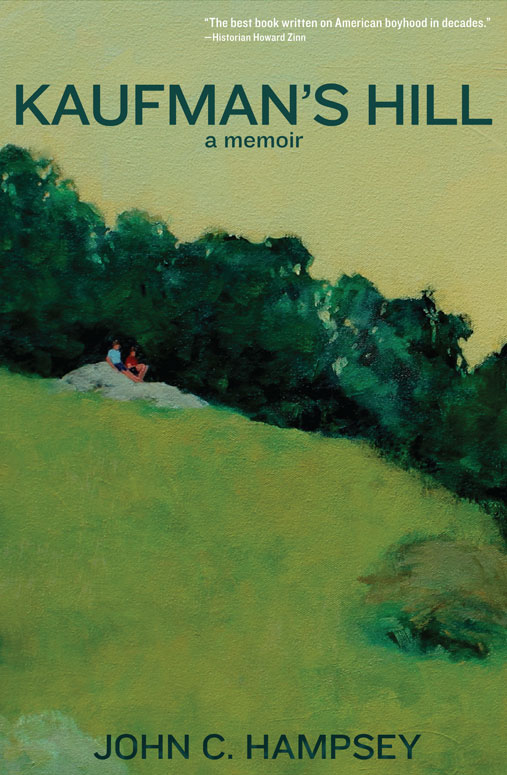

Kaufman’s Hill
A PROFOUND AND INTENSELY MOVING BOYHOOD MEMOIR
Kaufman’s Hill opens with a prosaic neighborhood scene: The author and some other young boys are playing by the creek, one of their usual stomping grounds. But it soon becomes clear that much more is going on; the boy-narrator is struggling to find his way in a middle-class Catholic neighborhood dominated by bullies, the Creelys, who often terrify him.
It’s the Pittsburgh of the early and mid-1960s, a threshold time just before the counter-culture arrives, and a time when suburban society begins to encroach on Kaufman’s Hill, the boy’s sanctuary and the setting of many of his adventures. As the hill and the 1950s vanish into the twilight, so does the world of the narrator’s boyhood.
“My pappy says if you’re going to be afraid of everything, you may as well live in the sewer” are the words that first open the narrator’s eyes. And once he befriends the enigmatic, erratic, but charismatic Taddy Keegan, he becomes bolder and no longer lives in abject fear of the Creelys. The narrator’s relationship with Taddy proves to be unconventional, though. Taddy, caught in his own imaginary universe, is often unaware of companions around him. The narrator focuses on uncovering the mystery of Taddy: Why does he live his life like he’s a performer? Who is he really?
The narrator’s world is a mix of exhilarating freedom — because of absent parents, teachers, and priests — and imminent dangers. And his home life is problematic. The narrator observes his taciturn father as he copes with manic behaviors and cyclically repeating problems, while his mother struggles to better the life not just of her young son, but that of her African American cleaning woman in a time of racial animosity and racially-related urban violence. The boy watches his parents with eyes too young to truly understand, and is increasingly disappointed by his father, who becomes more remote and who rarely speaks to him.
As the narrator matures, his self-concept shifts within a widening world that includes disconcerting sexual experiences with public school girls, and his struggle to frame himself within the realm of the Catholic Church. He finds flaws with all but one religious figure, an aunt, who is a sublime and mystical presence in his life. The narrator joins sports teams that bring him back to the same kind of childhood “friends” he wanted to escape, and he questions whether he himself could act like a bully. When he begins high school, the narrator, at a dramatic moment, leaves boyhood behind, which might include leaving Taddy Keegan behind as well.

“Kaufman’s Hill is among the most touching, sensitive, and spellbinding memoirs I’ve encountered in many years. Beautifully and exactly written, this book will surely reach into the hearts of its readers. I was deeply moved.”
―Tim O’Brien, Author, The Things They Carried
“The best book written on American boyhood in decades.”
―HISTORIAN HOWARD ZINN
“Touches on something about boyhood within the expansiveness of life that I can’t remember anyone doing, especially with this voice and perspective.”
―Al Landwehr, Widely Published Author of Short Fiction, and Professor Emeritus, Creative Writing, Cal Poly
“A wonderful, sensitive, and compelling read, with a sensibility in both content and style that is simply breath-taking.”
―Cathie Brettschneider, Humanities Editor, University of Virginia Press

